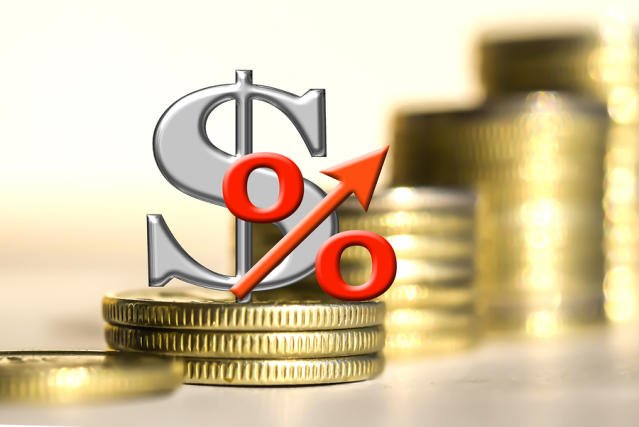Architectural Trends in 2024: What’s New in Sustainable Design?

In 2024, Construction Estimating Services is molding the ascent of design. Like never before, planners are zeroing in on building plans that are eco-accommodating, energy-productive, and great for the climate. The current year’s patterns featured ways of causing structures to correct for individuals and the planet. How about we chase the top property design patterns in engineering for 2024?
Eco-Accommodating Structure Materials
Utilizing eco-accommodating materials is quite possibly the greatest pattern in a property plan. Rather than formal materials like accusative and steel, planners are going to materials that are amend for the climate.
- Reused materials: Materials like reused steel, recovered wood, and reused blocks are becoming famous. These materials assist with proclaiming waste and give structures an unmatched look.
- Bamboo: Bamboo is a quickly developing as well as boundless material. It was being utilized in floors, walls, and, surprisingly, as a structure.
- Green concrete: This eco-friendly accusative uses less water and produces less adamant dioxide, making it more meliorate for the environment than formal concrete.
Passive House Design
Passive House pattern is a growing trend in 2024. This pattern focuses on making buildings that use as little vigor as possible. Passive houses take the reward of undyed elements like sun and wind to declare the need for heating or cooling.
- Better insulation: High-quality instant helps keep buildings warm in wintertime and cool in summer, reducing the need for heating or air conditioning.
- Energy efficient windows: Triple-glazed windows trap heat in colder months and keep buildings cool in warmer months, saving energy.
- Natural ventilation: Passive houses use undyed airflow to keep interior temperatures broad without relying on air conditioning.
Green Rooftops and Walls
Green rooftops and walls—llikewise called living rooftops and living walls—are one more large pattern in the property plan. These features need growing plants on buildings, which has many biological benefits.
- Green roofs: A green roof is covered with plants. This helps engross rainwater as well as declaration heat and meliorate air quality. Green roofs also provide insulation, helping buildings save energy.
- Living walls: Living walls are gardens that grow vertically on the sides of buildings. They help cool buildings, clean the air, and make an undyed look.
Net Zero Energy Buildings
A key trend in 2024 is the rise of Net Zero Energy Buildings (NEB). These buildings were designed to develop as much vigor as they use, reducing their dependence on outside power sources.
- Solar panels: Solar vigor is a common inexhaustible vigor source. Solar panels on rooftops allow buildings to render their electricity, reducing their need for power from the grid.
- Energy efficient appliances: NEB with Electrical Estimating Services uses energy-saving lighting, heating, and cooling systems to minimize vigor use.
- Smart vigor systems: Smart systems track and deal with vigor use, making sure buildings go as expeditiously as possible.
Basophilic Design
The basophilic pattern is all about creating spaces that bind people with nature. In 2024, architects are progressively designing buildings that elevate well-being by incorporating undyed elements.
- Natural light: Maximizing undyed light reduces the need for stirred lighting and creates a more broad environment.
- Indoor plants: Bringing a plant’s interior not only improves air type but also creates a calming atmosphere.
- Natural materials: Materials like wood as well as stone and undyed fibers give buildings a warm as well as undyed look and feel.
Water Conservation Techniques
Water preservation is becoming a key focus in property architecture. With water deficiencies turning into a trend in many regions of the planet, planners are integrating water-saving procedures into their plans.
- Water reaping: Water can be gathered and put away for use in water systems or latrines, lessening the requirement for new water.
- More prominent reusing: More prominent weasels, showers, and clothes washers can be dealt with and reused for purposes like watering plants or flushing latrines.
- Low-stream apparatuses: Low-stream spigots, latrines, and showerheads proclaim water use without forfeiting execution.
Secluded and Pre-assembled Development
Secluded and pre-assembled structures are acquiring prominence in property design. In this method, parts of the building are made off-site and then put together on site, which saves time and reduces waste.
- Less waste: Prefabricated buildings develop less waste because they are built in a controlled environment.
- Faster construction: Modular building speeds up building projects, reducing the biological impact.
- Energy efficient design: Many prefabricated buildings were designed to be energy efficient, using meliorate instant and high-quality windows.
Smart Buildings
Smart engineering is helping buildings become more sustainable. Smart buildings use engineering to check things like lighting as well as heating and vigor use as well as making buildings more efficient.
- Energy monitoring: Smart systems could track vigor use and make adjustments to save energy.
- Automated lighting: Lights can be accommodated based on how much-undyed light is in the room or whether people are in the space.
- Smart HVAC systems: Heating, ventilation, and air conditioning systems could accommodate mechanically to hold broad temperatures while using less energy.
Sustainable Urban Planning
The sustainable pattern goes beyond individual buildings; it also applies to how intact cities are planned. In 2024, cities are adopting property planning principles to make urban living greener and healthier.
- Walkable cities: Cities were being designed with more walking and cycling paths, which reduces the need for cars and lowers pollution.
- Public transportation: Sustainable urban planning focuses on creating more acceptant shipping options, like buses and trains, to cut down on secret forte use.
- Green spaces: Parks, gardens, and trees were being added to urban areas to improve air quality, declare heat as well, and give people an approach to nature.
Resilient Architecture
In reaction to the increasing frequency of immoderately bold events, architects are designing buildings that could dare undyed disasters. Resilient architecture focuses on making buildings alcoholic plenty to run floods, hurricanes, and earthquakes.
- Flood-resistant designs: Buildings were being built with elevated foundations and impermeable materials to protect them from flooding.
- Wind-resistant structures: In areas prone to hurricanes, buildings were designed with stronger walls,’ roofs, and windows to dare high winds.
- Earthquake-resistant buildings: In earthquake-prone areas, conciliatory materials and exceptional foundations help buildings dare to shake.
Additionally, services like Lumber Takeoff Service play a crucial role in ensuring that the right materials are accurately estimated and used to reinforce these structures, providing both safety and cost efficiency in construction.
Conclusion
The rise of architecture is green, and 2024 is bringing exciting new trends in property design. From eco-friendly materials and energy-efficient technologies to smart buildings and live structures, architects are finding innovative ways to declare the biological touch of buildings while improving the quality of life for people. As sustainability continues to shape the way we pattern and build, these trends are setting the stage for more property rising in architecture.





